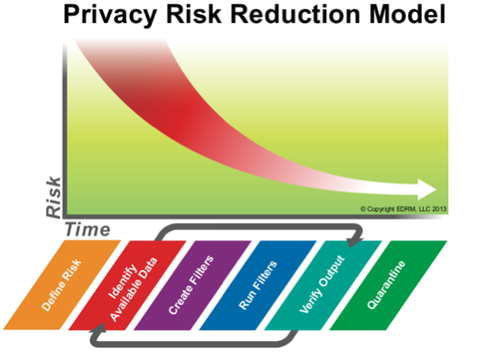James D. Zinn, Managing Director of Huron Consulting Group – eDiscovery Trends

This is the third of the 2014 LegalTech New York (LTNY) Thought Leader Interview series. eDiscoveryDaily interviewed several thought leaders after LTNY this year (don’t get us started) and generally asked each of them the following questions:
- What significant eDiscovery trends did you see at LTNY this year and what do you see for 2014?
- With new amendments to discovery provisions of the Federal Rules of Civil Procedure now in the comment phase, do you see those being approved this year and what do you see as the impact of those Rules changes?
- It seems despite numerous resources in the industry, most attorneys still don’t know a lot about eDiscovery? Do you agree with that and, if so, what do you think can be done to improve the situation?
- What are you working on that you’d like our readers to know about?
Today’s thought leader is James D. Zinn. James is Managing Director of Huron Consulting Group. James leads the technology team at Huron Legal, which includes the data collection, processing, hosting, production, and forensic analysis services along with infrastructure, support, and software development. James has extensive experience managing the strategic and tactical use of technology within investigative and litigation consulting matters.
What significant eDiscovery trends did you see at LTNY this year and what do you see for 2014?
The Legal Tech conference was another good experience for us as a company. It was an overall good conference for us with good traffic at our booth, great meetings throughout the week and good business opportunities coming from the show. So, overall our impressions were positive and we felt good about the experience all around. In fact, I would say that it was one of the best LegalTech experiences ever from our perspective.
As I look around the conference in terms of trends, the biggest trend that I noted was an increase in the discussion about Information Governance. The whole concept of Information Management and Information Governance has become a popular topic. There were lots of exhibitors using Information Governance or related language when talking about their products. There were also several sessions and panel discussions about it, as well. So, that stood out to me as the biggest trend I saw at the show over the previous year. I think that observation is reflective of an overall trend toward a greater focus on Information Governance and the impact it has on a number of things, including discovery costs and workflow.
The other trend that I see for 2014 is more stratification among the service providers. Part of the reason for that is continued industry consolidation. I think there is a growing differentiation between service providers, which we feel from our own experience, as well. On one hand, a number of providers are continuing to mature and develop their full service offerings while on the other hand; there are new entrants into the market focusing on the application of technology as a differentiator from legacy service providers.
A related trend is greater acceptance of cloud-based solutions. I think a number of providers are focusing on leveraging cloud-based infrastructures and technologies in their solutions. I’m sensing an increased acceptance within the marketplace for cloud-based solutions.
With new amendments to discovery provisions of the Federal Rules of Civil Procedure now in the comment phase, do you see those being approved this year and what do you see as the impact of those Rules changes?
I don’t have any particular source of information that would lead me to do anything more than speculate on the timing of their approval, but I do see them being accepted this year. While the amendments have generated a fair amount of discussion, I think they represent a positive trend and will be approved and enacted. I think the impact on the up front preparation and speed of litigation has been talked about extensively and will be a natural evolution for those who are already well prepared in that area. They will cause even more pain than the last amendments for those who are not as organized. The impact on the early calendar of litigation may come as a shock to the litigants who aren’t as organized as they need to be. I also think the introduction of proportionality via the amendments is a good thing and will bring some reasonableness to the burden of discovery that many of our clients face.
It seems despite numerous resources in the industry, most attorneys still don’t know a lot about eDiscovery? Do you agree with that and, if so, what do you think can be done to improve the situation?
That’s an interesting question because I wonder how much my experience personally and our experience as an organization is influenced by attorneys who are self-selecting. In other words, do we see a representative sample of attorneys in the marketplace? I would argue that we’ve seen an increase in the sophistication of our clients, both our clients at law firms and those at corporate legal departments. To generalize them as a group, they are definitely more educated and more knowledgeable around eDiscovery issues than they were a few years ago. But, I don’t know if that’s because of the nature of the types of clients we tend to attract are those that have recurring needs for discovery services and have been dealing with it for a number of years.
I do think that, as an industry, there are a lot of resources available to educate, so for those who do not avail themselves of those resources, it may be a reflection of their lack of a regular need for those services. It’s easy to say that there could always be more education provided, but I think that you’re correct in the assessment that there are a number of good resources already.
What are you working on that you’d like our readers to know about?
We pride ourselves on being close to our clients and their needs and so we are continuing the development of our full-service offerings. Our focus continues to be around holistic solutions to our clients’ problems, discovery being one of them, Information Governance certainly being another, compliance being a third, and so on. So, in each of these areas, our focus is on how we can provide a complete solution to our clients. By “complete”, I’m referring to everything from strategy and organizational assistance to help with the implementation of technologies or procedures and then on to the actual provision of services. Huron is continuing within eDiscovery and beyond eDiscovery within the legal industry to focus on providing relevant, holistic solutions.
Thanks, James, for participating in the interview!
And to the readers, as always, please share any comments you might have or if you’d like to know more about a particular topic!
Disclaimer: The views represented herein are exclusively the views of the author, and do not necessarily represent the views held by CloudNine Discovery. eDiscoveryDaily is made available by CloudNine Discovery solely for educational purposes to provide general information about general eDiscovery principles and not to provide specific legal advice applicable to any particular circumstance. eDiscoveryDaily should not be used as a substitute for competent legal advice from a lawyer you have retained and who has agreed to represent you.





